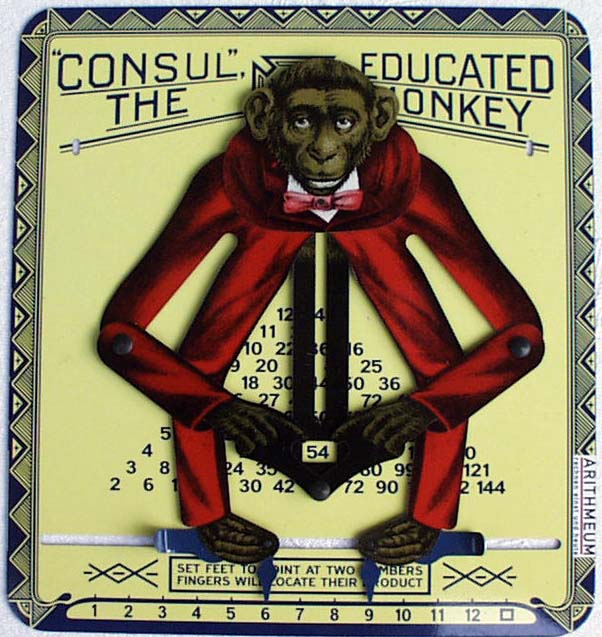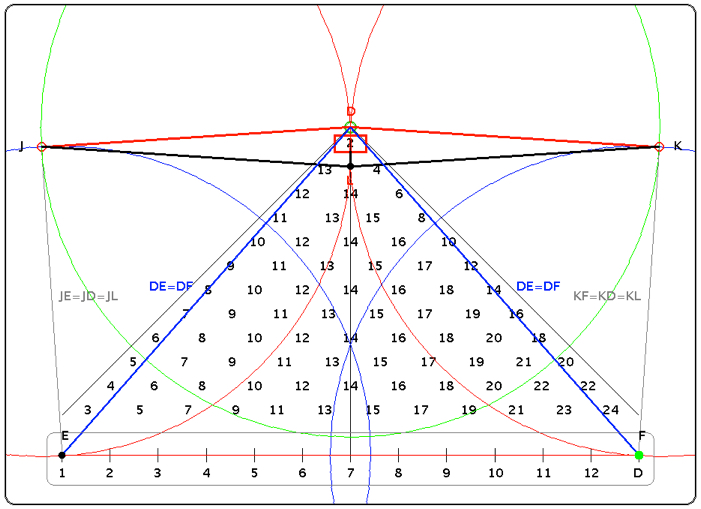The Educated Monkey
| The 'Educated Monkey'
was patented in 1916 by W. H. Robertson. It is a toy
'for educational purposes ... to stimulate the interest
of children in the study of numbers'. |
 |
You can add or multiply the two numbers. |
 |
Use the cross hair cursor and click
to set a foot on a number. Repeat to set the second number. |
 |
To set the same foot again, press command
key to catch it, then release the key and click. |
| In product mode set the right foot on the
square to read the squares of the numbers, in sum mode set the right foot on 'D' to read the double of the numbers. |
|
| Check the box to reveal the geometric
construction. |

|
Mechanical Construction
The three distances of stud J to studs D, L, and E are equal each to each: JD = JL = JE
and likewise:KD = KL = KF
Hence the quadrangle JLKD is a rhomb.
The angle between the upper arm (red)
and the leg (blue) is φ = 45° in my simulation. Then
the triangle of the number table is including a right
angle at its top.
A mathematical analysis (D. Haftendorn) proves that if the ratio of the distances is ED/JD = 2*cos(45°) = sqrt(2)=1.41
the indicator for the result is
moving along a straight line with slope m =
2*sin(45°)/sqrt(2) = 1 or 45°.
|

|
|
| Consul
the Educated Monkey, or the inventions of William H.
Robertson (P. A. Kidwell, Smithsonian) William Henry Robertson's September 1915 patent for the educational novelty (PDF, Google Books) Educated Monkey oder "Der rechnende Affe" (D. Haftendorn, Univ. Lüneburg) Consul, the Educated Monkey (Dirk Fox, Fischertechnik) |
2018-2023 J. Giesen
updated: 2023, Oct 06